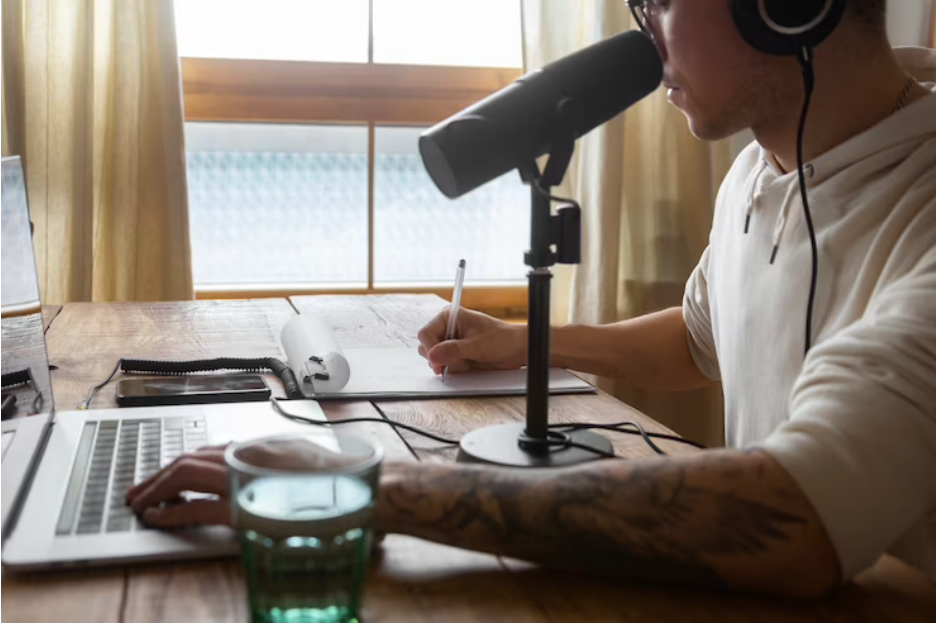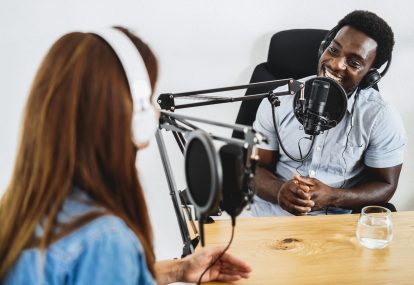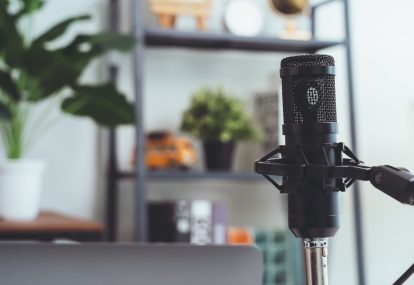
Podcasts are one of the best ways to reach mass audiences and create a community while only using your voice. You can discuss important topics that matter to you or tell a story you know the world needs to hear, armed only with your words and some high-quality recording equipment.
How do you make sure your podcast is going to succeed? These are the best studio setup tips and considerations everyone should keep in mind and how they’ll help you get your project in front of the right people.
Why Studio Setup Matters

Your studio setup makes a huge difference in how people will perceive you and the information you share. If your equipment is out of date, there’s a big chance that your entire podcast will feel like it’s twenty or thirty years removed from its modern counterparts.
Starting from the base of getting the best insulation for acoustic panels and creating a sound barrier, and building up to good editing software, every step has to be carefully considered. If you don’t want to alienate listeners, show that you’re willing to work to put out a podcast they’ll love.
Can You Make This Work in Your Current Home?
Most new podcasters can’t afford full professional studios outside of your property when they’re ready to pursue this dream. Through a good podcast, you’ll hopefully eventually get that budget, but to start with it might just be a home office.
Do you have a spare room you can revamp? Some small podcasters create recording corners in their homes, but for the best audio, it’s best if you have a space that’s set aside for this purpose. Not only will this help you get into the right mindset when it’s time to record, but it’ll also be easier for you to control what noises make it to your microphone while recording.
How to Create Perfect Silence
Silence is golden in recording, saving you hours of editing and giving your listeners a chance to focus on nothing but what you’re saying. Even if you plan on adding light music when editing, you need to make sure the base recording is crisp and without distractions.
Invest in high-quality home studio acoustic panels, create a buffer between any windows or doors and your recording equipment, and consider adding details like a carpeted floor to absorb sound further.
Avoid adding things like mini-fridges, fans, or space heaters in whatever area you’re recording in, as these noises can be incredibly distracting to listeners. If you’re worried about the space being too hot or cold while recording, boost your air conditioning or heating before you record, and then turn it off right before you start.
Run Sound Tests Before Every Recording
Even if you’ve been running a podcast for years, small mistakes can still happen. If you record an entire two-hour podcast only to realize there’s an echo after, you might have to start again from the beginning.
Record yourself talking, clapping, and also silent, and listen back to it before you start a new episode. Stopping issues early give you the chance to save yourself some time and trouble.
Are You Recording Video As Well?
A large portion of podcasts within the last ten years are also getting recorded on video. Although this might feel counterintuitive to someone who just wants to record their voice, it’s a great way to be able to crosspost clips of your podcast that will work on any social media and website.
If you’re recording video as well, you need to make sure to change the setup of your studio to allow for an aesthetic view. You don’t necessarily need to make a full stage for yourself, but setting up a desk with minimum clutter and themed decor can take you a long way.
Rookie Mistakes to Avoid
Everyone has to start from somewhere, but if you can learn from other people’s mistakes, you might be able to grow faster. One of the biggest mistakes a beginner podcaster can make is being underprepared. Whether this means they don’t create talking points or they jump into recording before having the right recording equipment, it can stop many people from listening to your podcast after just the first five minutes.
Forgetting to budget is one of the biggest mistakes you can make.

Another issue is red light syndrome! If you’re not comfortable with where and how you’re recording, you might end up sounding stunted and quiet despite being a generally talkative person. Creating a studio that allows you to feel like a pro will help stop red light syndrome and let you shine.
Podcasting Needs Planning to Work
Your podcast is a work of art that requires time, patience, and planning to come to fruition. If you’re ready to find your audience and get a fair share of advertisers, it’s time to get the best acoustic panels and audio recording setup you can: your voice deserves to be heard.




